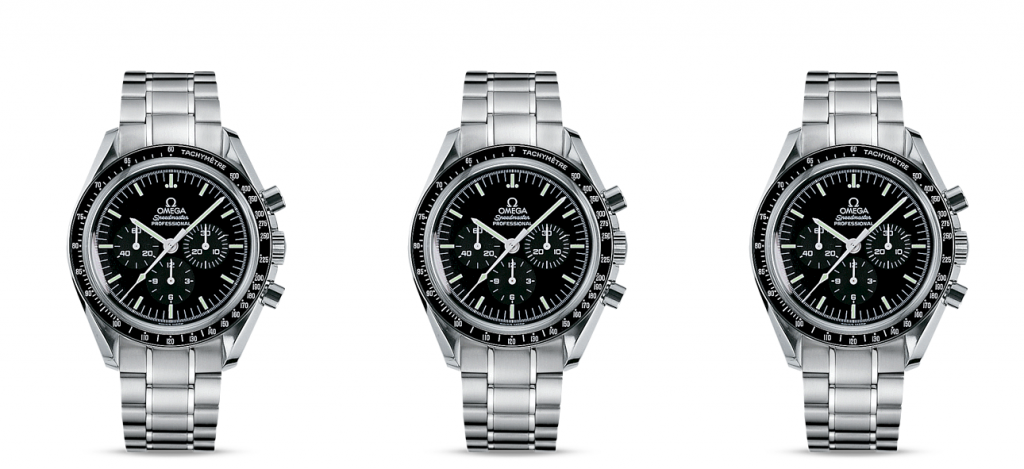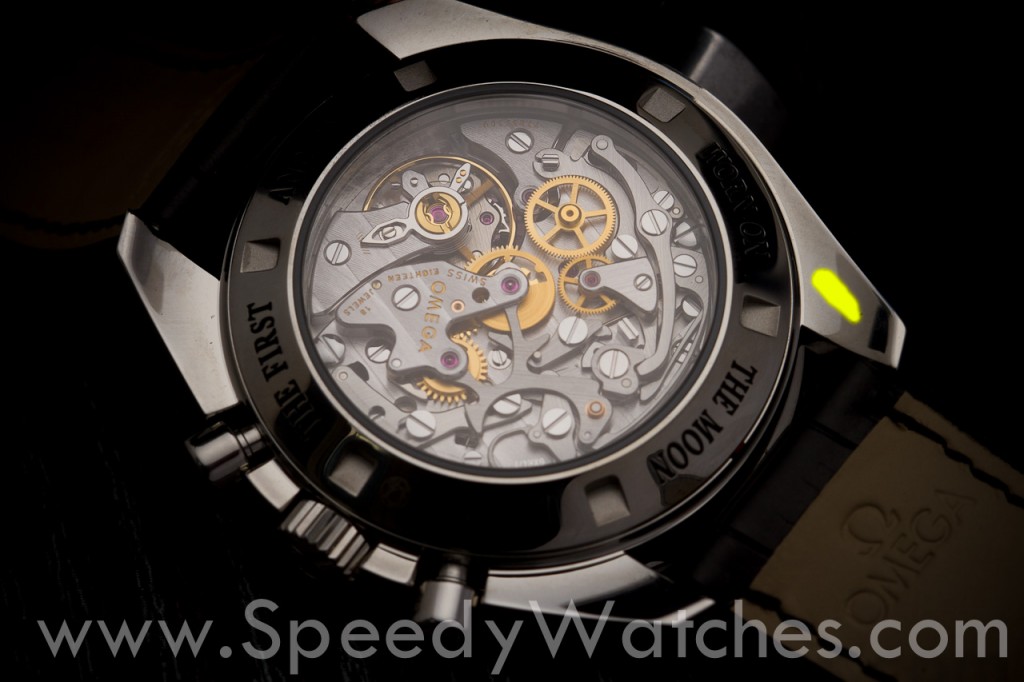
Three Omega Speedmaster Professional models looking exceedingly alike: reference 3570, 3572 and 3573. To little surprise, one of the questions most often asked among budding Speedmaster aficionado’s ist: what exactly is the difference between these three?
The 3570.50.00 was introduced in 1996 and discontinued somewhere in the second half of 2014, when it was replaced by the 311.30.42.30.01.005. This Speedmaster is fitted with a closed caseback and a hesalite (plexi) front. It is powered by caliber 1861.
The 3572.50.00 was introduced 1996 and discontinued somewhere around 2002. No direct replacement was offered; the 3573 more or less served as its replacement. This Speedmaster is fitted with a sapphire caseback and a hesalite (plexi) front. It is powered by caliber 1863.
The 3573.50.00, as indicated above, was introduced in 2002 as an updated replacement for the 3572. This Speedmaster is fitted with a sapphire crystal both front and back. It is powered by caliber 1863. This reference was discontinued in favor of the 311.30.42.30.01.006 in the second half of 2014.
In short:
- 3570: plexi front, closed caseback, caliber 1861
- 3572: plexi front, sapphire caseback, caliber 1863
- 3573: sapphire front, sapphire caseback, caliber 1863
As far as the 1861 / 1863 difference goes: the 1861 can be regarded as the standard version of this movement, while the 1863 is the ‘luxury’ model upgraded for use in models fitted with a sapphire caseback. It is therefore finished to a somewhat higher degree. The baseplate features circular graining, several bridges now sport Geneva stripes and both bridges as well as levers are now adorned with polished edges. Also, the 861 (and its successor 1861) have been using a Delrin (plastic) chronograph brake since approximately 1971, a feature introduced to reduce friction on the wheels caused by a conventional steel brake. On the 863 and 1863 this piece was changed back to metal so no plastic parts would show through the caseback.

The debate often gets heated much more quickly when it comes to the right choice of crystal for the Moonwatch. Purists prefer the plexi: this conform the original specs, plus the plexi adds a certain ‘glow’ that is unmatched by the sapphire. However, the plexi (hesalite if you prefer) is rather soft and scratches quite easily. The scratches can be buffed out easily on the other hand.
Sapphire crystal is much harder and will hardly scratch. However, the curvature of the glass is noticeably different and one could say a bit of character is lost – it is much less ‘vintage’ in appearance, although only those in the know will notice. There is less distortion. And -plus or minus, you decide- it adds a bit of heft to the Speedmaster, especially in the 3573 model which is fitted with sapphire both front and back.
In todays market, a huge number of watches is fitted with sapphire crystal backs. Not all views are equal though – many of them are really not that spectacular to look at. The 1863 however is a nice sight – it is a very traditional chronograph movement that has powered Omega’s emblematic Speedmaster for decades, so it deserves a bit of attention every now and then.. 😉
In short:
- 3570.50.00 – purists model
- 3573.50.00 – modern take on the classic
- 3573.50.00 – the perfect combination?
Now, which one works best for you is of course a very personal decision.. IMHO, either of these (and their current-production counterparts) is a great choice.. But so are the limited editions.. the vintage ones.. the 9300.. Browse the selection we’ve uploaded right here.
WatchBase recommends buying at an Authorized Dealer when buying new and at a trusted and recommended party when buying used.


